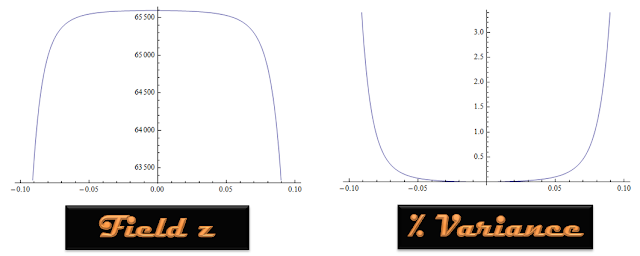Working on modelling the magnetic field that will be used to quench a 4 inch lead superconducting sphere in the h-ray experiment. The first trial was just to place the superconductor in a surrounding solenoid electromagnet. The correct magnitude of field can be obtained that way, but the uniformity isn't great. Adding more layers of windings increases the field strength but doesn't help with the uniformity. Each level of coils basically linearly increases the field strength. The percent change in field with length along the solenoid, (shown on the x axis below), stays pretty much the same though. The graphs shown are for one, two, and three layers of coils.
While looking around for a coil design that would give a more uniform field I came across a patent[1] that described a spherically wound electromagnet and promised a uniform field within the sphere. I tried modified the model to handle a spherically wound coil and got the results along the up-down axis, (z), and the equatorial axis, (r), of the coil shown in the graphs below. The z direction has a very nice improvement. The radial direction, even with it's 17% or so variance between the field at the center and the edge of the coil is still far better than the plain-old solenoid designs.
While looking around for a coil design that would give a more uniform field I came across a patent[1] that described a spherically wound electromagnet and promised a uniform field within the sphere. I tried modified the model to handle a spherically wound coil and got the results along the up-down axis, (z), and the equatorial axis, (r), of the coil shown in the graphs below. The z direction has a very nice improvement. The radial direction, even with it's 17% or so variance between the field at the center and the edge of the coil is still far better than the plain-old solenoid designs.



Have you looked at this type of spherical electromagnet for your experiment.
ReplyDeleteThis is the picture of it:
http://www.justodians.org/SphericalMagnet/01ElecMagPic1.htm
This is the patent application which is now in the public domain and free for all to use:
http://www.justodians.org/SphericalMagnet/PatentApp.htm
I invented it years ago but never had the opportunity to experiment with it.
Good Luck
John